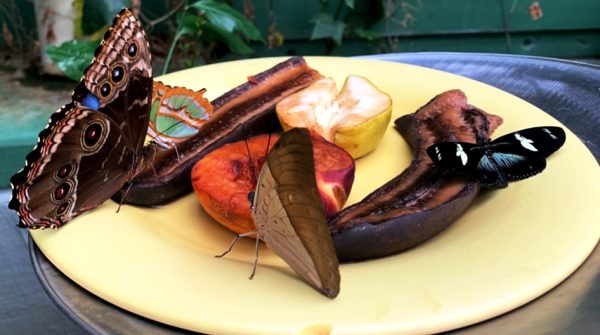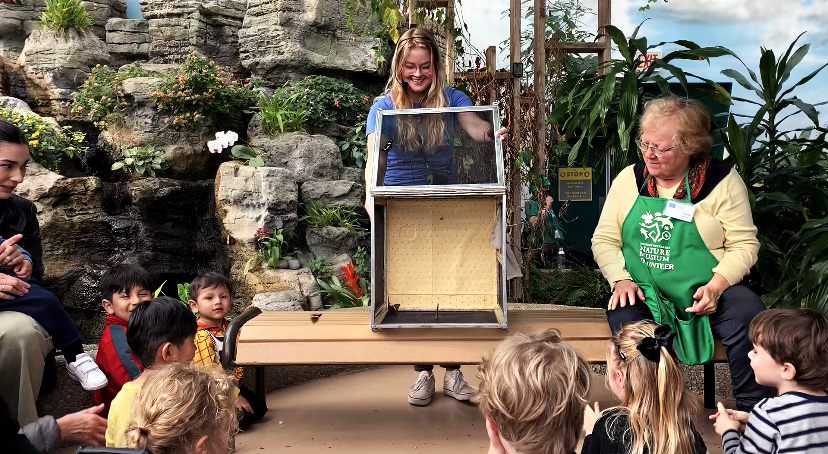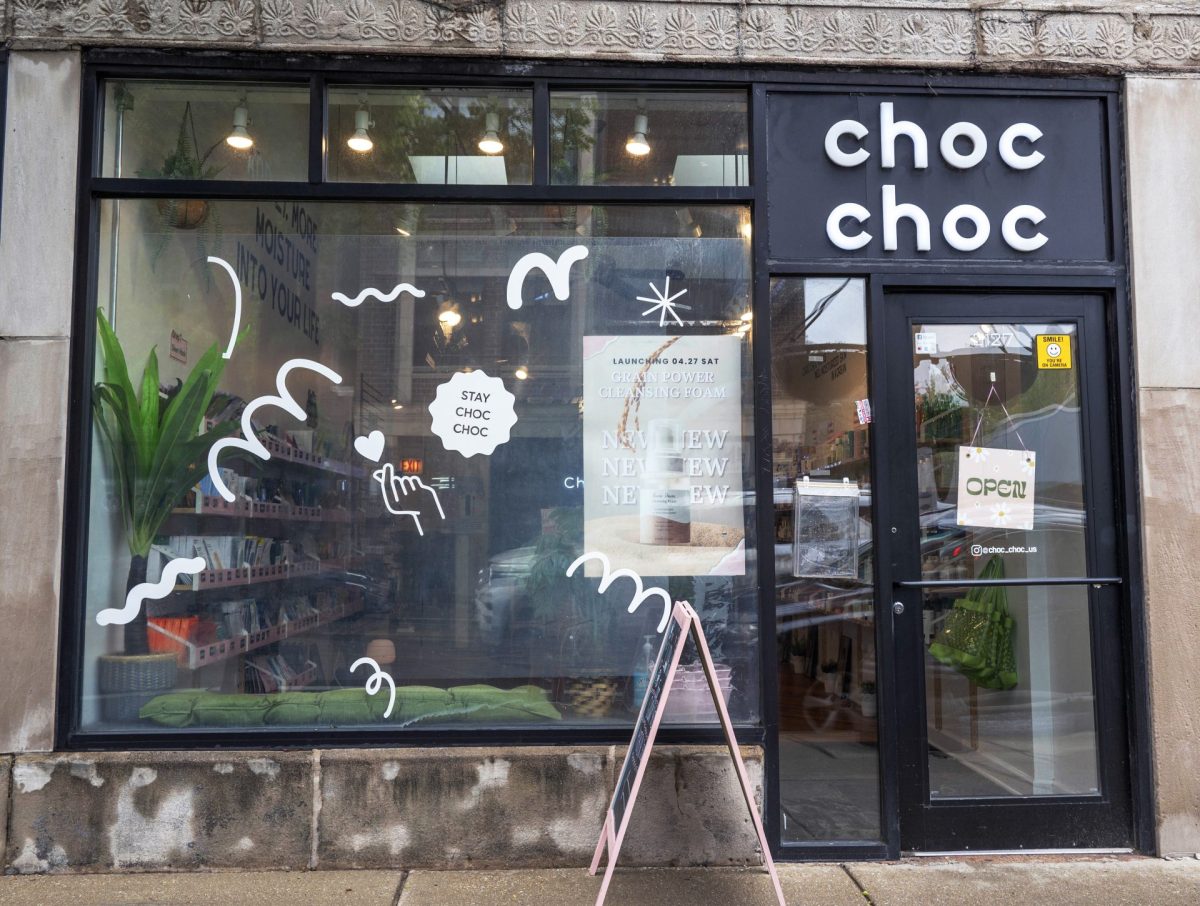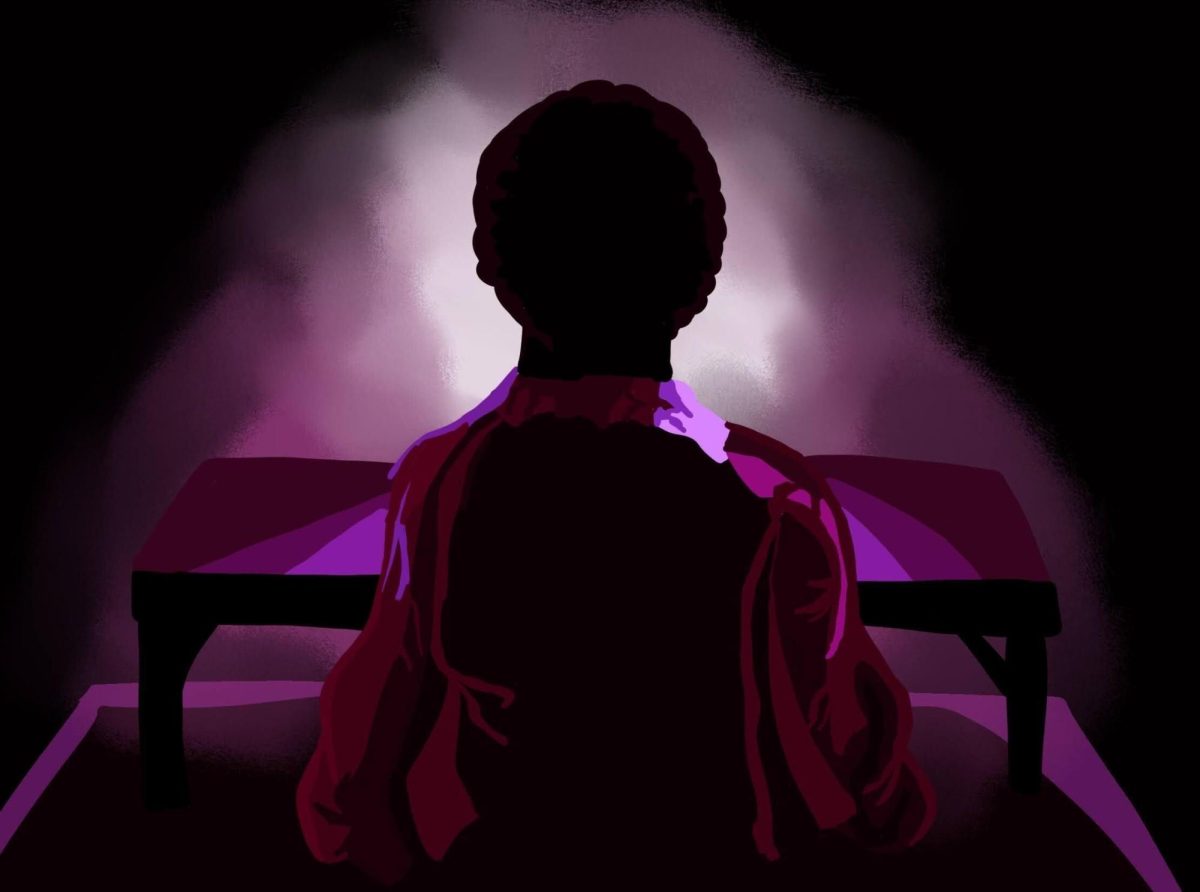With a “Hello Kitty” wand in hand, 3-year-old Zoey Rivera hoped to befriend one of the Judy Istock Butterfly Haven’s residents as her dad, Samuel, followed behind.
“Every time they come close, you go ‘Ahh!’” she said, noting that the butterflies were her favorite part of the exhibit.
Tucked away from the bustling chaos of urban life in the heart of Lincoln Park, visitors to the Haven find sanctuary in its tropical warmth, watching as vibrant blue and orange patterns are animated by fluttering wings that float from petal to petal.
The garden, located on the second floor of the Peggy Notebaert Nature Museum, is home to 1,000 exotic butterflies and moths from Asia to Central and South America. According to the museum’s website, general admission includes free entry.
The 2,700-square-foot eco-friendly greenhouse that protects its residents and visitors from Chicago’s temperamental weather is flooded by natural light, which illuminates the crisp green vegetation lining the walking path inside.
The sound of a babbling waterfall is an acoustic backdrop for visitors who can learn about the butterfly’s unique life cycle and marvel at the incredible diversity of the Haven’s 40 species, from the Jazzy Leafwing to the Common Morpho.
“You could meditate here, if you wanted to,” said Rohan Jain, a Chicago resident pleased to be visiting the haven for a second time. “It’s very peaceful.”
Zoey, who hoped her magic wand would make an attractive landing spot for the butterflies, called the atmosphere “relaxing.”
Every day at 2 p.m. during the Haven’s “First Flight Butterfly Release” of the day, visitors can watch as the newest generation of these arabesque creatures spread their wings for the first time.

This display of new life caused Northwestern student Manisha Devidi to return to the Haven for a second visit.
“The first time I came here, there were so many butterflies getting released,” she said. “It was beautiful.”
Mirna Roque, a Chicago resident who also enjoyed the show, said the experience made her feel “youthful.”
Devidi and several other visitors said they were particularly drawn to one of Haven’s most vibrant residents, the Common Morpho, whose wide neon blue wings unfold to mesmerize its audience.
Zoey said her favorite butterfly was “the orange one.”
Aside from its aesthetic and educational appeal, research and conservation are also important parts of the Haven’s mission.
The Peggy Notebaert Nature Museum and the Butterfly Haven opened in 1999 and are part of the Chicago Academy of Sciences, Chicago’s first natural history museum, founded in 1857, according to the Museum’s website.
The Illinois Butterfly Monitoring Network, a program that has been tracking the fluctuations in the state’s butterfly populations since the 1980s, is based at the museum.
The Network relies on volunteers who are trained to survey butterfly populations. These “citizen-scientists” are assigned to various sites and tasked with counting the butterflies they see, according to the Network’s monitoring guidelines.
Doug Taron, who has since retired as the curator of biology and vice president of research and conservation at the Nature Museum, spoke to reporters at Chicago’s PBS station, WTTW, in 2018. He said volunteers usually make about six survey trips annually and the data they gather tells conservationists about population trends and the effects of environmental change.
Scientists at the museum’s conservation lab are using this information to rebuild endangered butterfly populations on prairie restoration programs in Illinois. This includes species like the Baltimore checkerspot butterfly, the monarch and the regal fritillary, according to the Museum’s website.
Perhaps the most recognizable of the trio, the monarch butterfly has seen a drastic decrease in population in recent years as its main food source, milkweed, disappears.
Educators with the Nature Museum host over 200 annual workshops to help people understand threats to the monarch’s habitat and food source and changes in its migratory pattern.
The Baltimore checkerspot butterfly, a population the Butterfly Monitoring Network has been watching since 1988, has since disappeared from Bluff Springs Forest Preserve in Elgin, according to the museum’s website
The conservation lab has been working to raise checkerspot caterpillars using technology that mimics their habitat. Museum visitors can watch scientists work behind glass that separates their lab from the rest of the museum.
The Haven’s visitors are definitely learning.
“What is it before it becomes a butterfly?” Samuel, Zoey’s father, asked her.
“Caterpillars!” she eagerly replied.
“Very good,” he said, smiling, “Very nice.”








